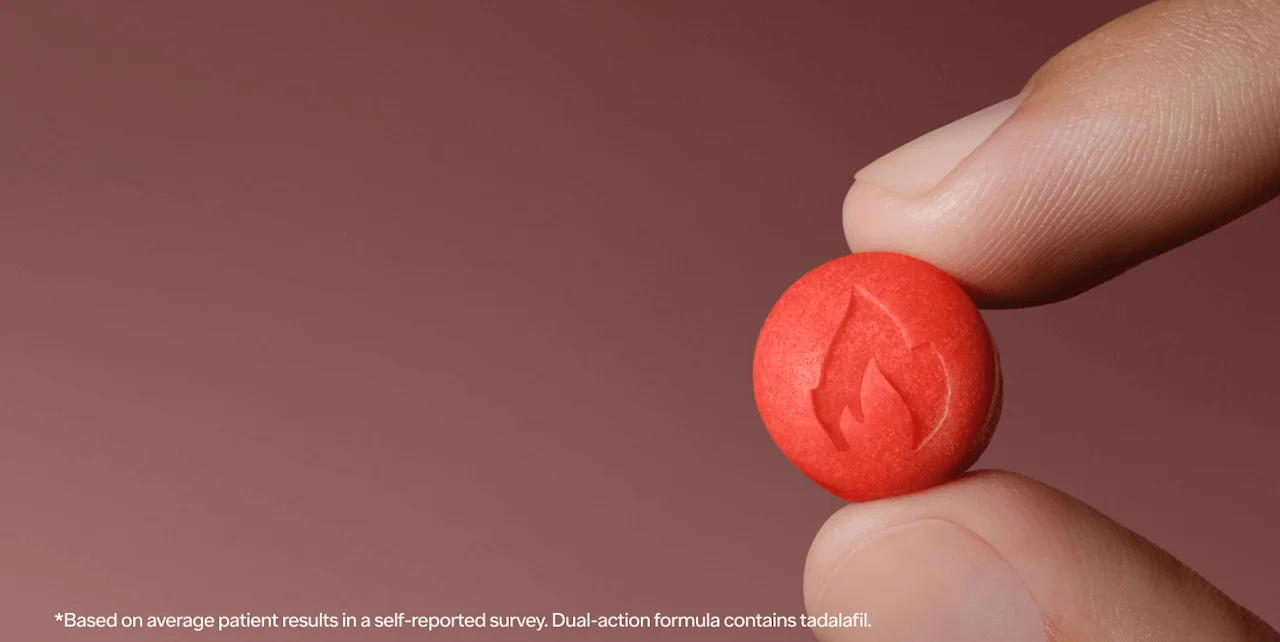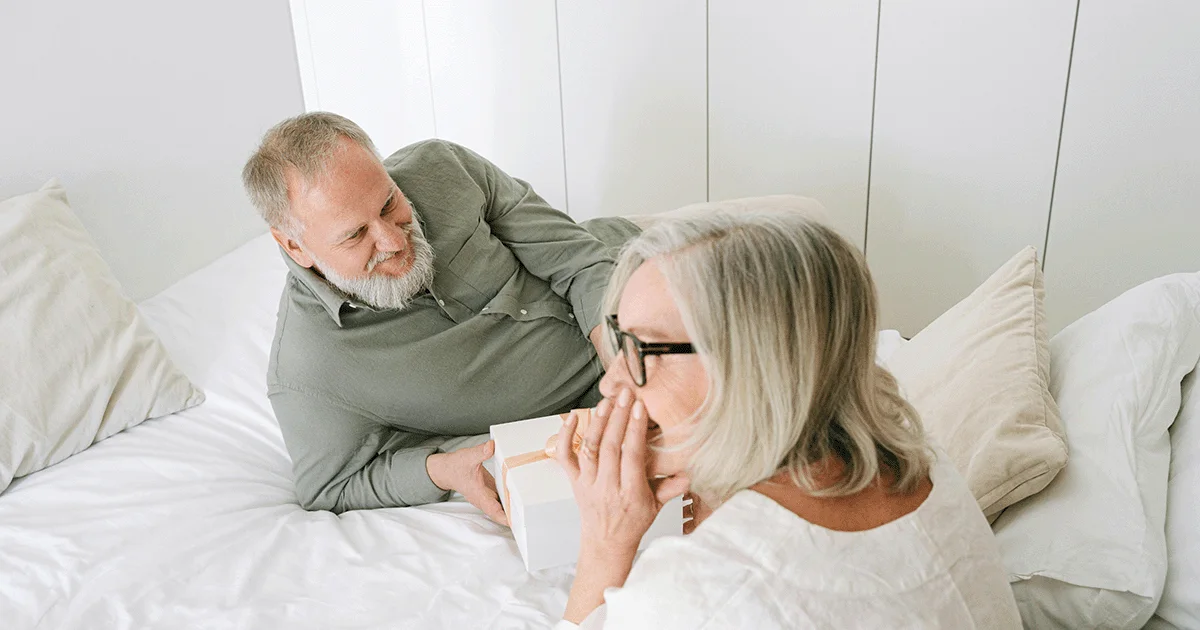Key takeaways
Most men think the average penis is over 6 inches, but in reality, the average flaccid penis is 3.43 inches and the average erect penis is 5.48 inches.
By definition, most men fall within the average range, and the extremes (very large penises or very small penises) are less common.
Function is what matters most, so if you’re having satisfying sex (for you and your partner), you’ve got nothing to worry about. If you’re dissatisfied with your function, a healthcare provider can help.
Here's what we'll cover
Key takeaways
Most men think the average penis is over 6 inches, but in reality, the average flaccid penis is 3.43 inches and the average erect penis is 5.48 inches.
By definition, most men fall within the average range, and the extremes (very large penises or very small penises) are less common.
Function is what matters most, so if you’re having satisfying sex (for you and your partner), you’ve got nothing to worry about. If you’re dissatisfied with your function, a healthcare provider can help.
How big is the average penis? Anxiety surrounding this question has plagued many guys since time immemorial—so, if you’re one of those guys, you’re certainly not alone.
You might wonder if yours fits the criteria for “normal” male penile length. If you haven’t looked up the numbers or watched a lot of porn, you might be inclined to believe that the average penis routinely reaches great lengths of 9 or 10 inches, but this simply isn’t true. While scientists don’t know precisely how big the average penis is, the research has shown it’s probably not as big as you think.
It turns out the average penis length is around 3.4 inches for a flaccid penis and 5.5 inches for an erect penis. Some people are bigger, some are smaller. But if it’s working for you and your partner(s), size really doesn’t matter. Continue reading to learn more about the average penis size.
What is the average penis size?
In 2023, researchers conducted a massive (no pun intended) meta-analysis to answer the age-old question: What is considered a big penis? Well… kind of. They looked at 75 studies over the course of 79 years on a total of over 55,000 men to understand how average penile length has changed over time, which does tell us a lot about what’s considered a big penis.
Here’s what they found:
The average flaccid penis length is 3.4 inches
And the average erect penis length is 5.5 inches
Perplexingly, they found that the average erect penis length has increased by 24% since 1992. We don’t know why that is (more research is needed), but even these upward trends don’t stack up to what most men think is an average size penis.
One study showed that most men believe the average penis length is over 6 inches. That may not sound so far off from that 5.5-inch erect penis measurement, but it’s still a misconception that’s leading many men to feel less than adequate in the penis department (when they likely fall within normal ranges).
There isn’t quite as much research on penis circumference (aka girth), but one large Italian study showed average flaccid penis girth to be around 3.8 inches and average erect penis girth to be around 4.7 inches.
Average penis length
So, why do so many people think the average penis size is more than 6 inches long? This probably comes from some key reasons.
On top of the inaccurate representation of penis size in porn, the values reported by people may not be an accurate representation of the average population. Some studies ask for self-reported values from people. People may be more inclined to report their penis size if they believe it to be larger than average. Additionally, since different people are measuring their own members the way they take measurements may vary.
Unfortunately, incorrect measurements (especially when they are larger than expected) have cemented themselves deep in our psyches. After more extensive (and accurate) research on the topic, we now know that studies claiming 6 inches were an overshoot of about 10% beyond the actual number.
Average penis girth
Penis girth—aka the circumference, better known as “how thick it is”—gets a lot of attention in the world of sex and sexual health. The average circumference, or girth, of an erect penis is 4.8 inches (9.3 cm), and the average flaccid penis girth is 3.7 inches (11.7 cm).
How to measure your penis
Knowing your penis size, and knowing how to measure your penis correctly, is important when it comes to choosing the right condom size. In fact, choosing the right condom might be one of the only instances where size actually matters. If your condom is too tight or too loose it can cause performance issues, such as condom-associated erectile problems and an inability to ejaculate, not to mention unwanted pregnancy or exposure to STDs.
To identify what size condom you need, you should measure the length and the girth of your penis with a tape measure. Once you know these two measurements, you can check different brands in-store or online and choose a condom that most closely matches your erect penis size.

What is a micropenis?
“Micropenis” is one of those terms that gets thrown around to refer to any penis that’s on the smaller side. But micropenis is a true medical condition, though it only affects less than 1%of the population in the U.S.
Healthcare providers determine a true case of micropenis by measuring the stretched penis length; for adults, a measurement of 3.7inches (9.3 cm) or less falls into the category of micropenis. Patients with micropenis often report dissatisfaction with the appearance of their penis, but their sexual function is typically fine.
We don’t always know the cause of micropenis, but it can result from some other medical conditions, such as:
Kallmann syndrome
Klinefelter syndrome
Growth hormone deficiency
5 alpha-reductase deficiency(a rare enzyme deficiency affecting genital development)
Several other rare congenital conditions
If you suspect you have a true case of micropenis, your healthcare provider will take measurements to confirm, then run a series of hormonal tests to try to determine a cause, which will help inform treatment. Depending on the cause, treatment can include testosterone, and in some cases, surgical treatment is recommended.
One thing to note is that a micropenis is not the same as a buried penis, which occurs when the penis gets surrounded by excess fat in the pubic region (common with obesity). In the case of a buried penis, treatment generally includes weight loss and, in some cases, surgery.
How many people have penises that are 7 inches or more?
It’s rare. Super rare. According to the available research, just one in a hundred guys have a penis that measures between 7–8 inches erect.
Numerous studies have found that Kinsey’s original estimate of the average penis being 6 inches is more than half an inch off the mark from the true average. While we’ll take his findings with a grain of salt, Kinsey’s other research showed that extremely large penises (over 7–8 inches) are exceedingly rare. In fact, the original Kinsey penis-size survey found that only:
1% of penises fall between 7–8 inches long
6 in 1000 penises (0.6%) are 9-inches long
Just over 0.2% of penises are longer than 9 inches—that’s 2 in 1000
Up to 90% of penises are within an inch of the average size. Statistically speaking, that means most people have a “normal-sized” penis.
Does penis size matter?
If you’re worried about whether or not your penis is large enough to satisfy your partner, rest assured that your partners are probably not nearly as interested in your penis size as you are. In a survey of 170 heterosexual women, only 1% of women found the length of a penis “very important.” Fifty-five percent of women found the length of a penis “unimportant,” and 22% of women found it “very unimportant”.
No matter your size, if you have a penis, remember this: size isn’t everything, and there are more ways to please your partner than penetration. Honest communication about what you and your partners like and dislike is the key to good sex.
What size penis do women want?
We don’t exactly know what size penis women want, but one small study asked 75 women to evaluate 3D models of penises and share their preferences. The results were slightly larger than the average penis size (women preferred a length of about 6.3 inches for a long-term sexual partner). However, this study was small and may not be representative of the overall population. More research is needed to understand average preferences. That being said, as long as you and your partner(s) are finding sexual activity enjoyable, it really doesn’t matter what penis size others might find preferential on average.
What size penis do men want?
Sadly, the vast majority of men are dissatisfied with their penis size. A large 2017 study found that only 27% of participants were satisfied with their penis size, and we know that many men tend to think their penis is smaller than the average penis size (based on faulty assumptions about those averages).
We don’t know for sure what the average man would like his penis size to be, but presumably, most are dissatisfied because they’d like their penis to be larger than average—meaning, larger than the assumed 5 or 6-inch “average.” By definition, most men already fall within the average range, so the majority of the dissatisfaction is from unrealistic expectations.
How to make your penis bigger
While most penises are a perfectly adequate size, some people are still unsatisfied with the size of their penis and want to find ways to make it bigger. If your penis falls in the normal range but you’re still bothered by the size of your penis, you may have what some researchers call penis anxiety or penis dysmorphic disorder (PDD—a type of body dysmorphic disorder).
In some cases, though, especially if you’re in the rare group of people with a micropenis, penis enlargement procedures or devices may be able to help. These may include:
Penuma (Himplant)
Injectable fillers (kind of like cosmetic fillers for the face)
Traction devices
It’s important to note, though, that these procedures are also associated with risks, and you should discuss your circumstances with a healthcare provider to see if any of these procedures might be right for you. Some of the treatments (like injectable fillers and Penuma/Himplant silicone implants) affect the girth of the penis but not the length.
Bottom line
If you’ve been worrying about your penis size, we hope what you’ve learned has allayed your concerns.
In all likelihood, your penis size is well within normal range. While many men think 6 inches is normal, the typical flaccid penis is 3.4 inches.
When it comes to penis health, function matters more than size. If you’re happy with your sex life, all is good.
If you’re dissatisfied with your function, a healthcare provider can help you figure out the root cause and help you have more pleasurable sex for both you and your partner.
DISCLAIMER
If you have any medical questions or concerns, please talk to your healthcare provider. The articles on Health Guide are underpinned by peer-reviewed research and information drawn from medical societies and governmental agencies. However, they are not a substitute for professional medical advice, diagnosis, or treatment.
References
Alsaleem, M. & Saadeh, L. (2023). Micropenis. StatPearls. Retrieved on Oct 28, 2024 from https://www.ncbi.nlm.nih.gov/books/NBK562275/
Belladelli, F., Del Giudice, F., Glover, F., et al. (2023). Worldwide temporal trends in penile length: A systematic review and meta-analysis. The World Journal of Men's Health, 41(4), 848–860. doi: 10.5534/wjmh.220203. Retrieved from https://pubmed.ncbi.nlm.nih.gov/36792094/
Di Mauro, M., Tonioni, C., Cocci, A., et al. (2021). Penile length and circumference dimensions: A large study in young Italian men. Andrologia, 53(6), e14053. doi: 10.1111/and.14053. Retrieved from https://pubmed.ncbi.nlm.nih.gov/33748967/
Flynn, K. J., Vanni, A. J., Breyer, B. N., & Erickson, B. A. (2022). Adult-acquired buried penis classification and surgical management. The Urologic Clinics of North America, 49(3), 479–493. doi: 10.1016/j.ucl.2022.04.009. Retrieved from https://pubmed.ncbi.nlm.nih.gov/35931438/
Francken, A. B., van de Wiel, H. B., van Driel, M. F., & Weijmar Schultz, W. C. (2002). What importance do women attribute to the size of the penis?. European Urology, 42(5), 426–431. doi: 10.1016/s0302-2838(02)00396-2. Retrieved from https://pubmed.ncbi.nlm.nih.gov/12429149/
Gaither, T.W., Allen, I.E., Osterberg, E.C. et al. (2017). Characterization of genital dissatisfaction in a national sample of U.S. men. Archives of Sexual Behavior 46, 2123–2130. doi: 10.1007/s10508-016-0853-9. Retrieved from https://link.springer.com/article/10.1007/s10508-016-0853-9
King, B. M. (2021). Average-size erect penis: fiction, fact, and the need for counseling. Journal of Sex & Marital Therapy, 47(1), 80–89. doi: 10.1080/0092623X.2020.1787279. Retrieved from https://pubmed.ncbi.nlm.nih.gov/32666897/
Lever, J., Frederick, D. A., & Peplau, L. A. (2006). Does size matter? Men's and women's views on penis size across the lifespan. Psychology of Men & Masculinity, 7(3), 129–143. doi: 10.1037/1524-9220.7.3.129. Retrieved from https://psycnet.apa.org/record/2006-09081-001
Prause, N., Park, J., Leung, S., & Miller, G. (2015). Women's Preferences for Penis Size: A New Research Method Using Selection among 3D Models. PLoS One, 10(9), e0133079. doi: 10.1371/journal.pone.0133079. Retrieved from https://journals.plos.org/plosone/article?id=10.1371/journal.pone.0133079
Veale, D., Miles, S., Bramley, S., et al. (2015). Am I normal? A systematic review and construction of nomograms for flaccid and erect penis length and circumference in up to 15 521 men. BJU International, 115(6), 978–986. doi: 10.1111/bju.13010. Retrieved from https://bjui-journals.onlinelibrary.wiley.com/doi/abs/10.1111/bju.13010
Wiygul, J. & Palmer, L. S. (2011). Micropenis. The Scientific World Journal, 11, 1462–1469. doi: 10.1100/tsw.2011.135. Retrieved from https://www.hindawi.com/journals/tswj/2011/348457/













